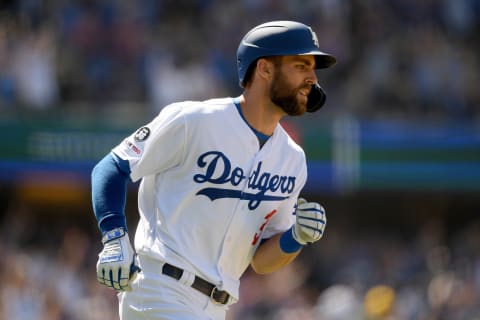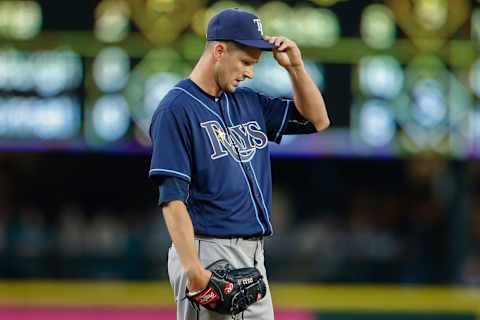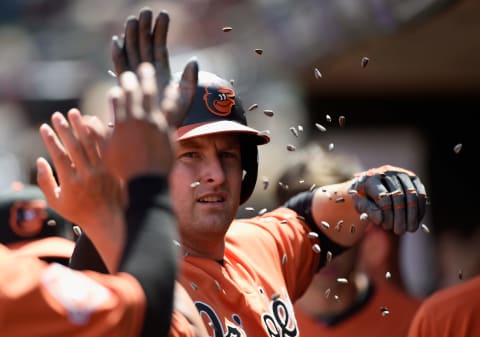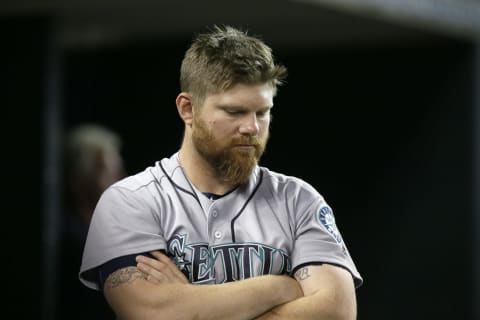Seattle Mariners: The four trades Jerry Dipoto actually lost

The debate of winners and losers in trades is easy when hindsight is 20/20. It’s one that currently commands the baseball conversation in Seattle, some 94 trades after Jerry Dipoto’s arrival.
Memories of Érik Bédard and Jesús Montero are still burned in the minds of Mariners fans, and even an entirely new regime is consistently met with the skepticism birthed from decade-long woes. For the nearly five years Dipoto has been Seattle’s general manager, he’s kept a fairly clean track record. Yet, the severe skepticism remains.
Most recently, this was put on display after Dipoto dealt Jean Segura, James Pazos, and Juan Nicasio to the Phillies for J.P. Crawford and Carlos Santana. The reaction was as torches and pitchforks as you can get, as Dipoto traded away his perennial All-Star shortstop for a faltering former top prospect and an aging first baseman with a big contract and some trade value. To say the return felt light would be an understatement.
Six months later, the entire narrative of the trade has switched. Now, Pazos is with Colorado, Nicasio has posted a 5.24 ERA in 32 appearances, and Segura’s wRC+ and OBP is down to 99 and .319, respectively. Meanwhile, Santana turned into Edwin Encarnación and the 76th pick in this year’s draft, which in turn developed into two top-20 prospects for the Mariners in Isaiah Campbell and Juan Then, and Crawford (1.4) has nearly matched Segura’s fWAR total (1.9) this season in 41 less games.
What once looked like a vintage mistake by the Mariners has quickly turned into one of Dipoto’s greatest feats in the Emerald City. But for how quickly that narrative switched, a similar debate is brewing about a deal initially regarded as Dipoto’s magnum opus. With Segura’s abrupt departure, Mitch Haniger‘s subtle regression, and the rise of Ketel Marte this season, suddenly Dipoto’s infamous Thanksgiving Eve deal with Arizona is under some scrutiny.
It shouldn’t be. What fans lose in the winners-losers debate is that both teams can come out of a deal happy. That’s how trades should work, in theory. And that’s how most of Dipoto’s deals have ended up going.
Some players like Mike Montgomery, Paul Blackburn, and Boog Powell have busted out for a short period time after being dealt by Dipoto, but have ultimately fizzled out. There have only been a few occurrences in Dipoto’s time in Seattle in which he’s actually flat-out lost a trade.
So we’re going to look at those today, starting with…

…THE BIG ONE
The trade that ultimately sticks in everyone’s minds as the absolute worst of Dipoto’s tenure. Zach Lee started a whopping total of 14 games for the Mariners organization. Note that I said ‘the Mariners organization’ and not ‘the Mariners.’ The former first-rounder didn’t even break the big league roster once in Seattle due to the abysmal 7.39 ERA he posted in those 14 starts, and was DFA’d in the following offseason.
What did Chris Taylor go on to do? The Dodgers developed Taylor into one of the game’s premier utility players, not only in the infield, but in the outfield as well. Since the trade, Taylor has accumulated 9.1 fWAR and counting, and has been a crutch for Los Angeles in their recent postseason runs.
But again, determining these deals is easy when hindsight is 20/20. At the time of the deal, this looked like a good buy-low opportunity for the Mariners. Lee was formerly a highly-touted pitching prospect who seemingly needed a change of scenery and Taylor appeared to be a flash in the pan after following up a great 2014 campaign with an atrocious 2015 that saw him post a 23 wRC+.

THE SOGGY ARM DEBACLE
This is the other “big one,” though it’s definitely aged well for the Mariners sake over the last year or so. Even though it worked as two separate trades, this ultimately became a three-team deal in which Mallex Smith was the best player dealt. But Smith was never the play for the M’s and was always going to Tampa, so it’s hard to fault Dipoto for dealing him away.
Dipoto did, however, make good on that by bringing Smith back this past offseason. Well before that, this deal went from a power play to a complete disaster in a matter of months. A “soggy arm” turned into a UCL tear, which resulted in Tommy John surgery, and Drew Smyly never pitched a single inning for the Mariners outside of Spring Training.
In the deal, the Mariners gave up two of their better prospects at the time in Luiz Gohara and Ryan Yarbrough. Given how bad Seattle’s farm system was, this hurt deeply. But Gohara hasn’t amounted to much, struggling with his conditioning and now dealing with a shoulder injury that’s kept him off the field for the entirety of the 2019 season thus far.
The two pieces that still kinda sting are Yarbrough and Thomas Burrows. But both are simply relievers at this point, though Yarbrough has started and piggybacked on occasion for the Rays. Still, in hindsight, the M’s didn’t lose a whole lot of value in this deal and have appeared to avoid total disaster, but it’s still goes down as a loss in the grand scheme of things.

THE GANG GETS (A) RACIST
In order to free up some payroll in hopes to re-sign Hisashi Iwakuma, Dipoto was determined to dump Mark Trumbo‘s contract at all cost. He found a suitor willing to take on the money and, as expected, didn’t get much back. More on that in a moment.
While Trumbo going on to hit 47 bombs and post a 2.2 fWAR the next season makes the trade bad enough, what makes it even worse is the throw-in the Mariners got in return. That would be Steve Clevenger, a backup catcher with average defensive mechanics and some history of success with the bat… oh, and some pretty trash opinions.
For as much as Clevenger was disappointing on the field, what followed after he broke his hand was even worse. During his rehab, Clevenger showed his true colors with a series of racist tweets that got him released and blacklisted from Major League Baseball later that day.
The unfortunate history of bad Mariners trades had quickly hit a new and unfamiliar low. Even though the organization shouldn’t be held at fault here, this was an embarrassing moment to witness. To make matters worse, Trumbo had been elected to the All-Star Game and was helping lead the Orioles to a wild card berth.
The team chasing them in that postseason race? The Mariners, along with the Tigers. It makes you think how much of a difference Trumbo would have made had he stayed, and whether that would have made up for the three-game gap between Seattle and Baltimore that year, especially given who the M’s ran out to first base on most nights. Speaking of…

THE FORGOTTEN ONE
Instead of Trumbo, the Mariners elected to go with Adam Lind as their starting first baseman in 2016. It… did not go well. While Lind was able to match his 2015 total of home runs at 20, his average and on-base percentage dropped 48 and 74 points, respectively. Eventually, he found himself in a platoon with Mariners legend Dae-Ho Lee and became an absolute non-factor for the Mariners, though he did provide a pair of memorable walk-off home runs against the White Sox and Cardinals.
This is far from the first time Dipoto acquired a player who simply didn’t work out in Seattle, but that’s not why the Lind deal has landed on this list. It’s the combination of how Lind ultimately replaced Trumbo and what the Mariners gave up in the deal.
At the time, the trio of young right-handed arms the Mariners dealt to Milwaukee didn’t feel like much. The former international signees had very little professional experience under their belt and weren’t necessarily pegged as surefire major leaguers. That would remain true on both Daniel Missaki and Carlos Herrera, but Freddy Peralta was a different story.
Peralta quickly shot through the Brewers’ organizational ranks, garnering attention and praise from national scouts and analysts. Suddenly, Peralta became one of Milwaukee’s prospects and has spent the majority of this last year or so on their 25-man roster.
Next. Fixing a Leake in a rival. dark
The 23-year-old was impressive in his 16 appearances last year, posting a 4.25 ERA with an excellent 11.03 K/9. This year has been a struggle for him, with Craig Counsell primarily using him out of the bullpen. Even then, the Brewers got the best value out of this deal, getting a young arm that’s controllable for years to come. All for a rental first baseman with a horrible goatee. Sigh.